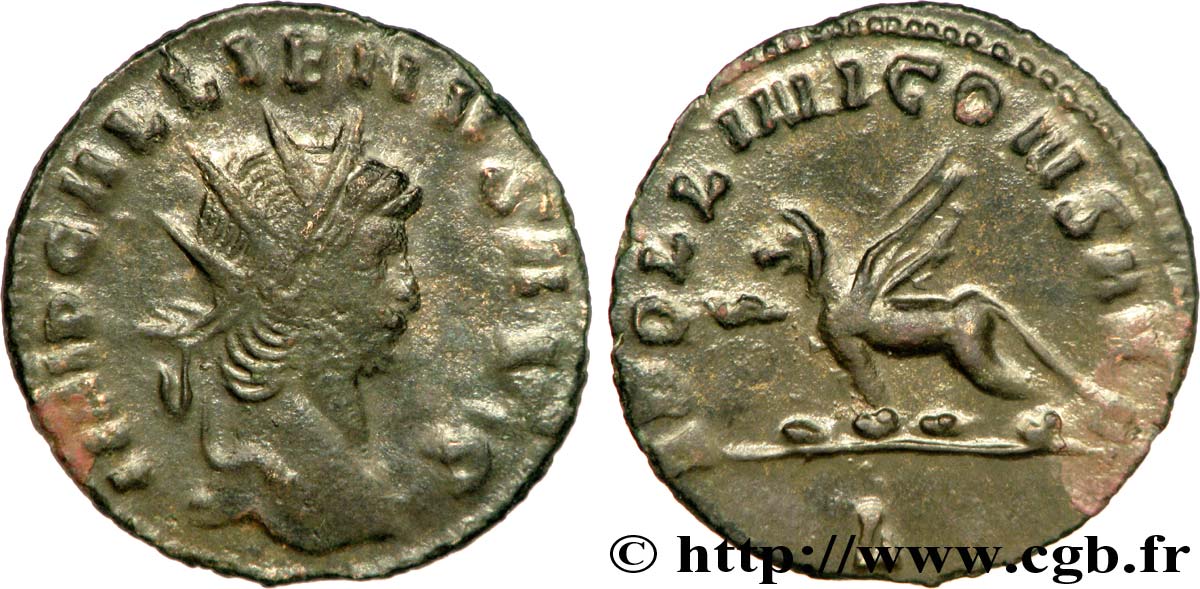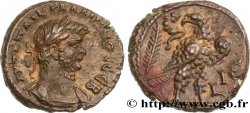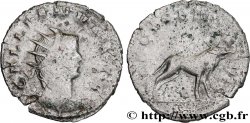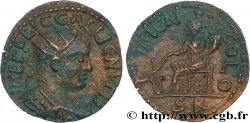v45_0520 - GALLIENUS Antoninien
MONNAIES 45 (2010)
Starting price : 100.00 €
Estimate : 180.00 €
unsold lot
Starting price : 100.00 €
Estimate : 180.00 €
unsold lot
Type : Antoninien
Date: 267-268
Mint name / Town : Roma
Metal : billon
Millesimal fineness : 30 ‰
Diameter : 20,5 mm
Orientation dies : 12 h.
Weight : 3,04 g.
Officine: 4e
Emission: 10e
Coments on the condition:
Exemplaire sur un flan bien centré. Portrait particulier de Gallien, fin. Revers inhabituel de frappe un peu molle. Patine marron foncé lissée
Catalogue references :
Predigree :
Cet exemplaire provient de la collection P. L.
Obverse
Obverse legend : IMP GALLIENVS AVG.
Obverse description : Tête radiée de Gallien à droite (O).
Obverse translation : “Imperator Gallienus Augustus”, (L’empereur Gallien auguste).
Reverse
Reverse legend : APOLLINI CONS AVG/.
Reverse description : Griffon ailé passant à gauche.
Reverse legend : -|-// D
Reverse translation : “Apollini Conservatori Augusti”, (À Apollon le protecteur de l'auguste).
Commentary
Avec son argenture superficielle. Émission dite du "bestiaire". Rubans de type 1 aux extrémités bouletées. Le type avec le griffon à droite est beaucoup plus rare que le type normal avec le griffon à gauche. Début de cassure de coin perceptible au revers dans le champ devant le griffon.








 Report a mistake
Report a mistake Print the page
Print the page Share my selection
Share my selection Ask a question
Ask a question Consign / sell
Consign / sell
 Full data
Full data









